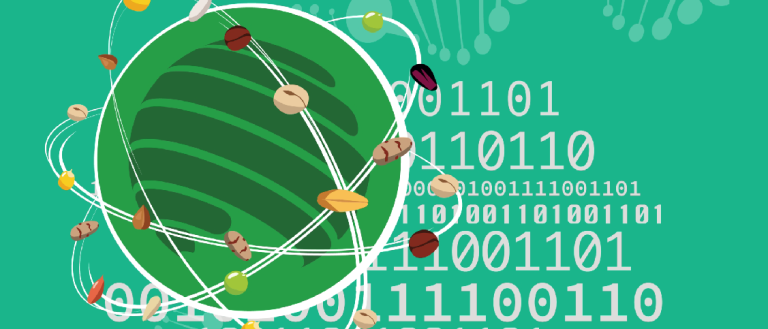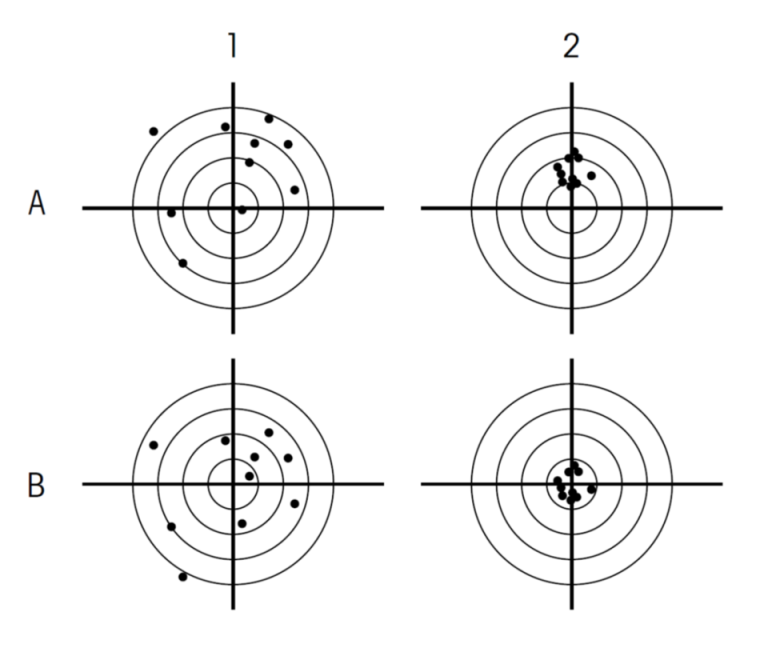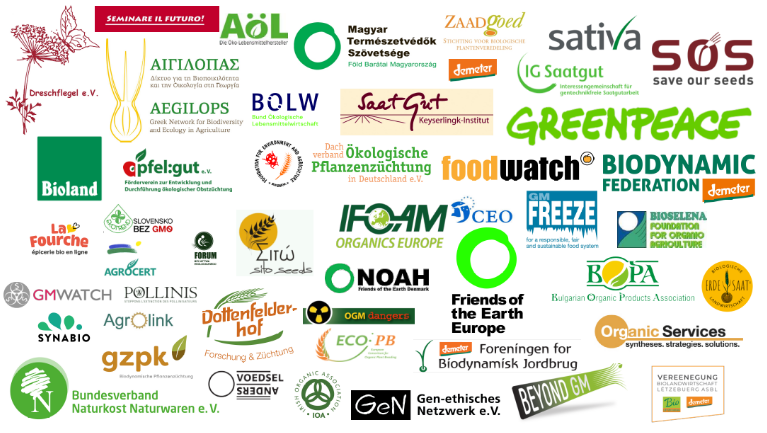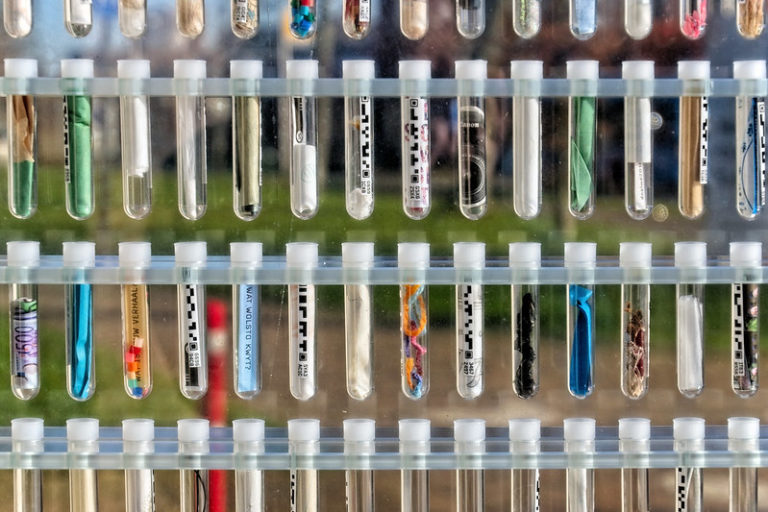The European Commission’s legal initiatives on the Living
In less than a year and a half, from May 3, 2022 to October 12, 2023, the previous European Commission has launched a number of legislative initiatives concerning the Living. The deregulation of GMOs, the digitization of living organisms and even patents are just some of the issues on the table of member states and the European Parliament. If adopted, these projects will make it easier for companies with substantial financial, human and technical resources to take ownership of the Living. These initiatives do echo current international negotiations.

Since July 5, 2023, attention has been focused on the European Commission’s proposal to deregulate a large number of GMO plants. This would remove the risk assessment, traceability and labeling obligations (except for seed lots) along the entire production and processing chain, right up to consumers. But this deregulation of GM plants is by no means the only subject on the agenda of the European Parliament and the Council of the European Union.
These initiatives have one thing in common with current international discussions. If adopted, they would remove the ability of national authorities to trace both a genetically modified product covered by a patent and the origin of the “material” at the basis of a patented invention. In this way, patents would become a tool for appropriating living organisms, all the more effective since claims could no longer be restricted to “invented” products.
At the international level, facilitating the appropriation of the Living
Multinationals’ strategy to take ownership of the Living through industrial property tools revolves around one imperative for these companies: to eliminate all traceability and information on the origin of the “material” on which their patented inventions are based. In the field of the Living, this “material” is the biodiversity, whether wild or cultivated. Knowing the origin of the living organisms used to develop a patented invention would, in theory, mean limiting industrial property claims to the organisms resulting from the invention. A prospect that does not meet the ambitions or industrial imperatives of seed, pharmaceutical, pesticide, micro-organism or digital companies.
The computer-based tools was a key element in this strategy. It has made it possible to greatly accelerate the sequencing of the genomes of living organisms, and to set up computerized databases to compile digital sequence information (DSI). These databases can contain genetic sequences, but also information on the characteristics of the genetic resources that contain them, or other information linked to these data. These DSI are the subject of numerous regulatory debates, even though there is no agreed legal definition.
Exploiting biodiversity using the “genetic resources” constituting it today requires authorization from local authorities to access these resources and, possibly, to transfer them from their place of origin to laboratories and markets. For plants, this means giving up any intellectual property rights relating to these resources, their genetic parts or components, and then to share the benefits derived from the exploitation of this biodiversity. In a number of international bodies, DSI issue is currently used as an opportunity to circumvent these obligations. Within the Convention on Biological Diversity (CBD)i, but also within the FAO’s Commission on Genetic Resourcesii or the International Treaty on Plant Genetic Resources for Food and Agriculture (ITPGRFA)iii, negotiations are underway to determine whether DSI are non-patentable genetic resources or patentable products of research. This last position is the one systematically taken in numerous international bodies (ITPGRFA, CBD…) by the “Europe group”, which includes a number of European countries that are not members of the European Union. If it were decided that they are not genetic resources, their use would not be subject to the rules summarized above. Another important point is that many DSI databases are already freely accessible on the Internet without any indication of the geographical origin of the sequenced material, and it is often no longer possible to trace this origin, as many very different “genetic resources” may contain absolutely identical DSI. This state of affairs undermines the ability to trace the natural origin of what becomes a patented “invention”.
These DSIs enable companies to apply for patents on sequence information they claim to have developed using a particular patentable genetic modification technique. Obtained on the basis of DSI, the scope of these patents would nonetheless extend to all organisms containing the sequences concerned, on condition that the origin of the DSI is not indicated in the databases or required in the patent application, and that States are deprived of any effective capacity to control. The World Intellectual Property Organization (WIPO)iv has just completed its work on this issue. This issue is also of interest to the pharmaceutical industry, explaining why the World Health Organization (WHO) is also working on itv.
The European Commission makes several moves
Current European Union legislation on GMOs is a major obstacle to this ongoing international strategy. It requires labelling, documentary traceability and publication of analytical procedures for the detection and identification of any GMO released or marketed in Europe. If these traceability methods are provided, the very broad claims sought by patent-holding companies can no longer be met so easily, since they imply that anyone can identify a patented product and distinguish it from any other product not resulting from the patented invention. The same companies have therefore long been pushing the European Union and other countries to stop demanding GMO labelling and traceability, claiming that their genetic modification techniques do “the same thing as nature, or as traditional breeding” that cannot be patented, just faster, and therefore indistinguishable from it. This enables them to extend the scope of their patents to biological resources containing naturally, or as a result of unpatentable traditional selection, the same DSI as those covered by their patents.
The European Commission has launched a number of legislative initiatives in Europe, over a short period of time to say the least, in response to industry’s desire to get rid of all traceability obligations. These initiatives are also an opportunity to get rid of other requirements of current European regulations which are deemed unnecessary such as risk assessment. From May 2022 to October 2023, the Commission presented no less than seven proposals for regulations to the European Parliament and the Council of the European Union. The table below (which Inf’OGM will regularly update) summarizes these different procedures, as well as :
- the one still under informal discussion on a possible new interpretation of Regulation 1829/2003 ;
- the two requests from the European Parliament for two proposals for regulations to be formulated.
But, what’s the big picture?
With regard to DSI, in October 2023 the European Commission presented a proposal (procedure 2023/0353) for the European Union to sign the agreement adopted within the United Nations Convention on the Law of the Sea (UNCLOS) and concerning “the conservation and sustainable use of marine biological diversity of areas beyond national jurisdiction”. The agreement quotes but does not define DSI, thus preventing any immediate progress in the debate. A year earlier, in May 2022, the European Commission turned its attention to the field of human health, formulating a proposal for a regulation (procedure 2022/0140) to regulate access to Europeans’ health information, including their genetic, genomic and proteomic data. Gathered in digital form in databases, these information are human DSI, to which the proposed regulation proposes to give access to research and industrial players.
In the case of GMO plants (including marine and freshwater algae), deregulation was proposed in July 2024 (procedure 2023/0226). The aim of this proposal is to no longer subject many GMO plants to risk assessment, labeling and traceability requirements, and thus to allow the scope of patents on DSI (“genetic information” or “biological material” associated with a particular “function”) to be extended to all organisms containing and expressing this function, whether or not they are derived from the patented invention.
GMO micro-organisms are also the subject of discussions aimed at lightening the current framework. A still informal discussion has been initiated between the Member States and the European Commission on a potential new interpretation of Regulation 1829/2003, which could lead to an exemption from labeling and traceability for batches of food or feed additives contaminated with DNA from GMMs (genetically modified micro-organisms) used to produce these additivesvi.
In April 2023, the European Commission also launched a legislative project in the medical field. It proposed (procedure 2023/0132) to harmonize and streamline authorization procedures for medical gene therapy products “containing recombinant nucleic acid sequence(s) or genetically modified microorganism(s) or virus(es)”, or GM cells.
Finally, in February 2024, the European Parliament asked the European Commission to submit a proposal for the deregulation of GMMs obtained by new genetic modification techniques, along the lines of what it had proposed for plantsvii.
Also in February 2024, the European Parliament called for a proposal in the animal sector similar to that requested for micro-organisms obtained by new genetic modification techniquesviii.
Seeds are also the subject of an ongoing legislative initiative, launched in July 2023 (procedure 2023/0227). Adopted, the European Commission’s proposed regulation could facilitate the identification of commercialized seeds by molecular markers, remove existing national protections of farmers’ rights, pave the way for patented GMOs and facilitate the confiscation of all farmers’ and traditional seedsix.
Patents are the latest area to be affected by initiatives from the European Commission. In April 2023, it presented two proposals for regulations aimed at extending the duration of patents granted for plant protection products (procedure 2023/0126) and medical products (procedure 2023/0127). These proposals are currently being discussed among the European Parliament, the Council of the European Union and the European Commission.
Summary of the European Commission’s legislative initiatives relating to Living
| GMO DEREGULATION | |||||
| Plants obtained by “NGT“ | GMM obtained by “NGT“ | GMM DNA in lots of additives | Pharmaceutical GMM | Animals obtained by “NGT“ | |
| Purpose | Deregulation of numerous GM plants | Deregulation of numerous GMM | Regulatory status of products containing GMM DNA traces | Harmonization of the authorisation procedure for medicinal products | Deregulation of numerous GM animals |
| Procedure reference | 2023/0226 | Request from EP on the 07/02/24 | 2023/0132 | Request from EP on the 07/02/24 | |
| Proposal from EC | Text of the proposal (05/07/2023) | To follow the discussions (Last meeting to date : 20/09/2021) | Text of the proposal (26/04/2023) | ||
| EP’s Commission | Text of the report (24/01/2024) | Text of the report (21/03/2024) | |||
| EP’s vote | Decison adopted (07/02/2024) | Decison adopted (10/04/2024) | |||
| 2nd EP’s vote | Text adopted (24/04/24) | ||||
| EU Council vote | |||||
| Final text | |||||
| DSI | PATENTS | SEEDS | |||
| UNCLOS | European Health Data Space | Phytopharmaceutical products | Medicinal products | Seed regulation | |
| Purpose | Signature of the BBNJ agreement (GR and DSI in international waters) | Access to genetic, genomic and proteomic human data | Unitary supplementary protection certificate for plant protection products | Unitary supplementary certificate for medicinal products | Production and marketing of plant reproductive material in the Union |
| Procedure reference | 2023/0353 | 2022/0140 | 2023/0126 | 2023/0127 | 2023/0227 |
| Proposal from EC | Text of the proposal (12/10/2023) | Text of the proposal (03/05/22) | Text of the proposal (27/04/23) | Text of the proposal (27/04/23) | Text of the proposal (05/07/23) |
| EP’s Commission | Text of the report (19/04/24) | Text of the report (05/12/23) | Text of the report (24/01/2024) | Text of the report (31/01/2024) | Text of the report (22/03/24) |
| EP’s vote | Decision adopted (24/04/24) | Decision adopted (13/12/23) | Decison adopted (26 février 2024) | Decison adopted (28/02/24) | Decison adopted (24/04/24) |
| Interinstitutional negociations | Agreement adopted (22/03/24) | ||||
| 2nd EP’s vote | Text adopted (24/04/24) | ||||
| EU Council vote | |||||
| Final text | Text adopted (19/07/2024) | ||||
i Eric MEUNIER, « Négociations en cours sur la numérisation du vivant », Inf’OGM, 14 mai 2024.
ii FAO, Commission on Genetic Resources for Food and Agriculture, « Digital sequence information ».
iii Guy Kastler, « Interconnections between new biotechnologies and DSI or GSD », Inf’OGM, 4 September 2024.
iv K.M. Gopakumar, « WIPO opens more widely the door to biopiracy », Inf’OGM, 6 November 2024.
v Frédéric Prat, « Main basse sur les pathogènes par l’OMS ? », Inf’OGM, 11 February 2021.
vi See the minutes of the meeting held on 20 September 2021, item A.07 :
European Commission, Health and Food Safety Directorate General, « Standing Committee on Plants, Animals, Food and Feed Section Genetically Modified Food and Feed », 20 September 2021.
vii Eric Meunier, « La Commission européenne veut en finir avec les OGM », Inf’OGM, 24 July 2023.
viii Ibid.
ix Guy Kastler, « Seed marketing reform: freeing cultivated biodiversity or patented GMOs? », Inf’OGM, 4 March 2024.














